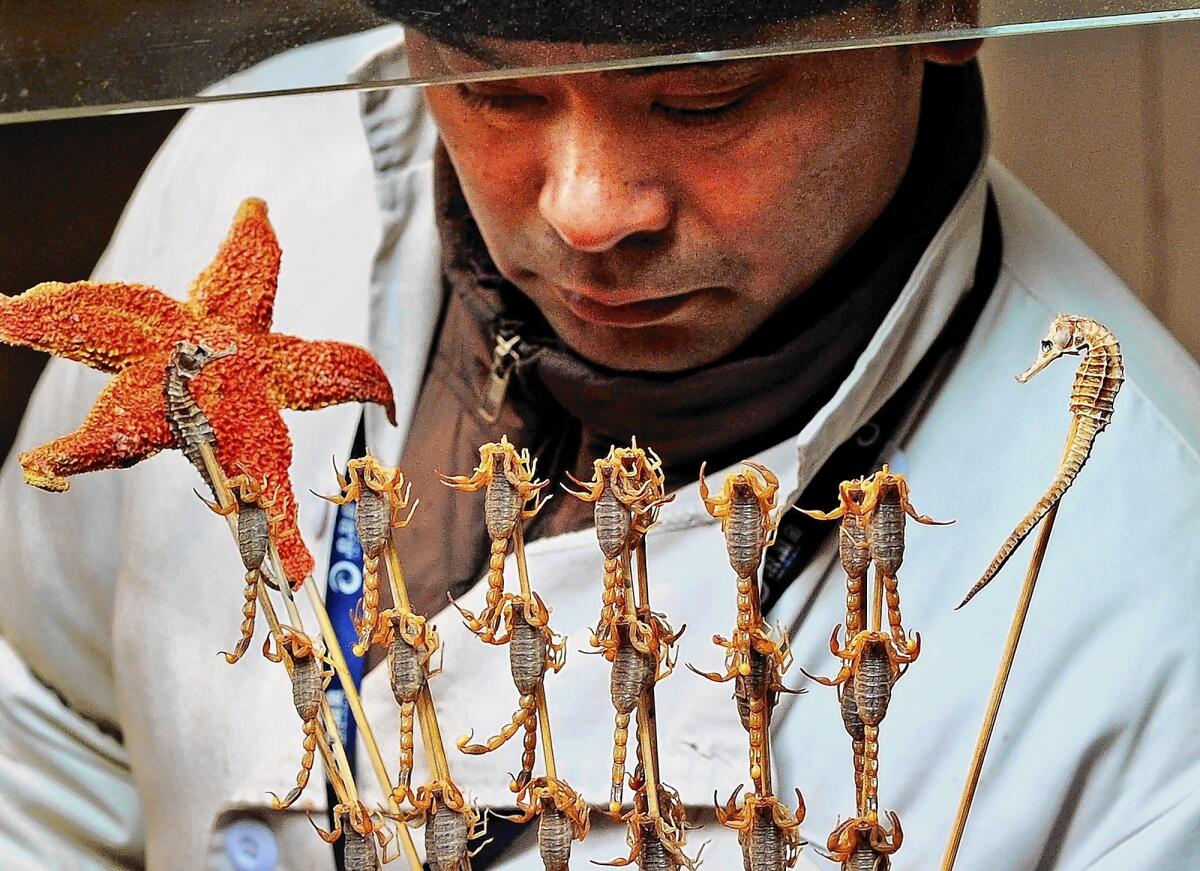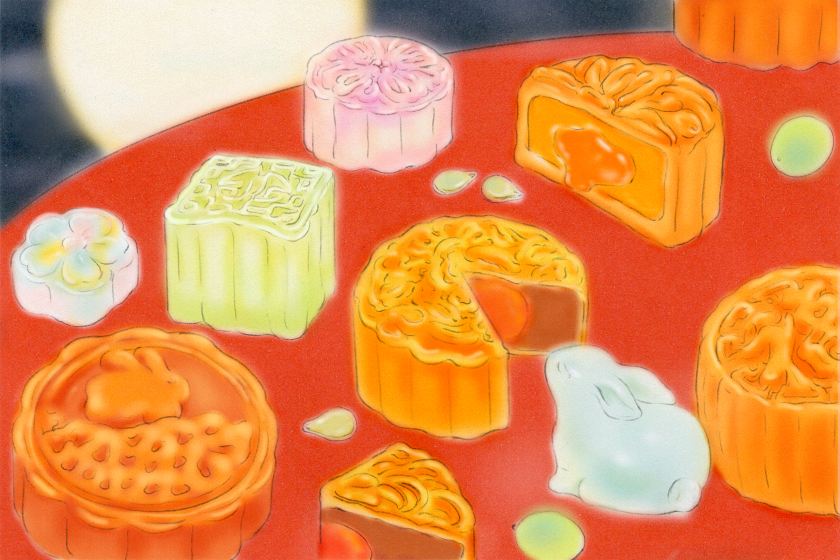Revisiting weird foods of ‘Unmentionable Cuisine’: Earthworm broth, anyone?

Culling my bookshelves recently, I came across my much-thumbed copy of “Unmentionable Cuisine” and remembered the dinners, years ago, that Bonnie Hughes of the late Augusta’s Restaurant in Berkeley organized with author Calvin W. Schwabe. The menus read something like this: deep-fried turkey testicles with Parmesan, baked lamb eyes with truffles and shiitake, veal brains in coconut cream, intestine dumplings, and fried crickets and peanuts — and that’s just for appetizers. Main dishes included red-cooked duck tongues, whole stuffed frog, grilled guinea pig, and grilled rattlesnake marinated in whiskey, ginger and soy. The dinners had the thrill of the illicit, and everyone had a merry time.
In the 35 years since the book was published, some of these then-”unmentionable” ingredients have become eminently mentionable, even prized. Menus, at least in Los Angeles, now routinely list beef cheeks, oxtails, pig’s ears or feet, sweetbreads, marrow bones and the occasional blood sausage. Gastronauts boast about eating fish sperm sacs or chitlins or chapulines (Oaxaca’s fried crickets). Whole-animal butchery has been embraced by a new generation of chefs and/or butchers, who often use the odd bits for charcuterie or salumi.
But while “Unmentionable Cuisine” is a reminder of how far we’ve come in what we are willing to try, it also shows us how far we still have to go.
“Unmentionable Cuisine” was an early manifesto for Americans to abandon what had become a narrow diet and try some of the foods that millions of people around the world enjoy. A professor of veterinary epidemiology at UC Davis and a member of the International Committee for the Anthropology of Food and Food Habits, Schwabe, who died in 2006, lived in remote corners of the globe for more than 30 years. An avid cook who was both curious and sociable, he collected recipes over the years from restaurant owners, cooks and people he met in markets wherever he lived.
In the book, Schwabe urged Americans to reexamine their food prejudices, not from some holier-than-thou height but because he seriously believed people were missing out on some delicious stuff. “It is meant to be a practical guide to help us and our children prepare for the not too distant day when the world’s growing food-population problem presses closer upon us and our overly restrictive eating habits become less tolerable,” he wrote. “I do not think this prospect need portend disaster, for opening our minds about foods and educating our palates to receive new and varied taste experiences could prove as enjoyable an experience as it will be a necessary one.”
Things looked pretty bleak then, as he noted that Americans not only “eat many fewer species of animals today than in times past, but rarely do we eat anything more than the muscle tissues of even those animals” and that 40% of all the beef we eat is “in the form of the mechanically ground, homogenous paste we call hamburger.”
So, of course, his first chapter is beef with recipes that cycle through the whole animal (whole roasted ox from England) to recipes for headcheese, beef tongue, cheeks, osso buco and oxtail Roman-style, all not that far out for anybody with a semi-adventurous palate. But what about a recipe for “slivers of ox palate” or, here’s a good one, calf’s eyes stuffed with truffles, then dipped in eggs and bread crumbs and deep-fried. He’s included dishes of spleen, pancreas, blood, mountain oysters (testicles), even a French recipe for calf udder croquettes.
Much of the book features even more unfamiliar fare on the order of earthworm broth, Samoan baked fruit bats, Turkish sheep’s feet with yogurt, Estremaduran cat stew, French crepes with fish sperm and béchamel, uterus sausage and stuffed sow’s udder. To tantalize with just a few.
This book is sure to deflate any idea that you or I have tried everything. I’ve had porcupine and cane rat stew at a rather fancy restaurant in West Africa. That’s nothing. Schwabe confronts us with our own culinary myopia backed up with a veritable avalanche of recipes, all written in the kind of shorthand real cooks favor.
As a practical-minded scientist, he also makes the suggestion that maybe we should think about eating our pests, starting with pigeons. Gourmands’ highly prized squab, he points out, is merely a 25- to 30-day-old pigeon about to leave the nest. And then there’s rattlesnake and other reptiles.
And finally, dear readers, he gets to insects, with recipes for silkworm omelet from China, red ant chutney from India and bee grubs in coconut cream from Thailand. My favorite, though, has to be crisp roasted termites from Swaziland. Just wait till I get hold of those buggers gnawing at my house.
“Unmentionable Cuisine” is still in print in paperback (University of Virginia Press, $24.50.)
More to Read
Eat your way across L.A.
Get our weekly Tasting Notes newsletter for reviews, news and more.
You may occasionally receive promotional content from the Los Angeles Times.








